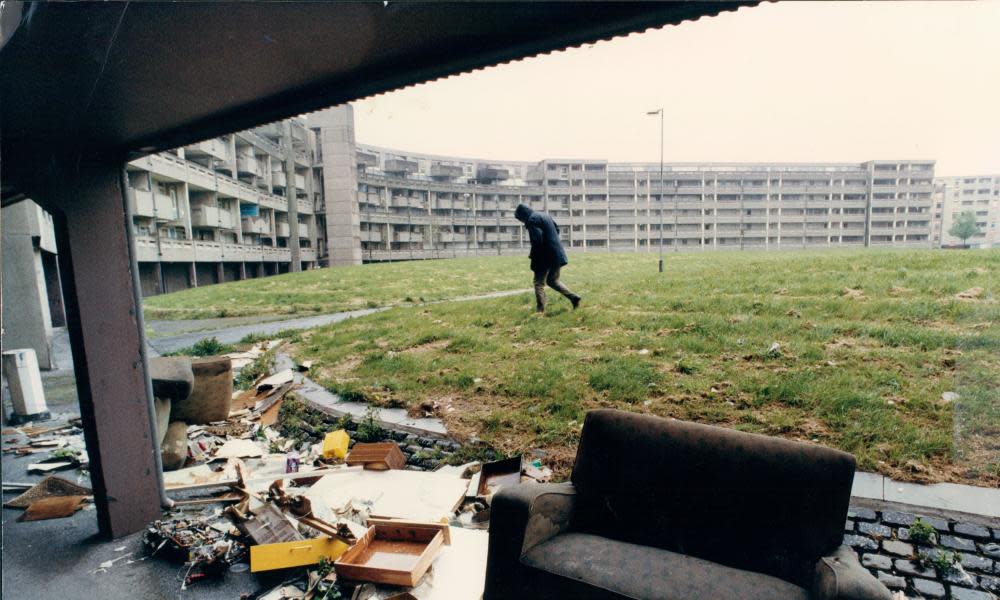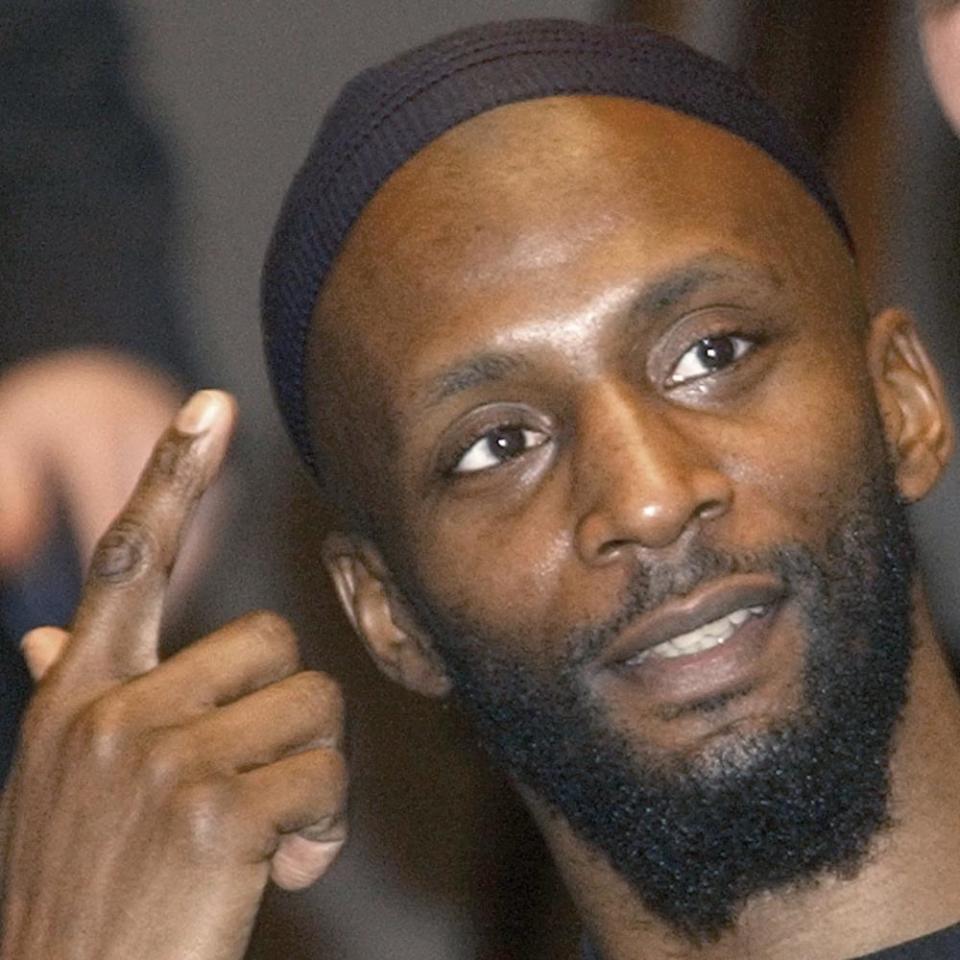Small part of Manchester that has been home to 16 jihadis

In the small pocket of Manchester where the suicide bomber who killed himself in Iraq this week grew up, many before him had trodden the same path.
The handful of streets in Moss Side within a mile of the childhood home of Ronald Fiddler, also known as Jamal al-Harith, have been home to nine who are known to have joined terrorist organisations and have either been jailed, have disappeared or have killed themselves in the name of Islamic State.
A Guardian investigation has found that 16 convicted or dead terrorists have lived within 2.5 miles of al-Harith’s home address. It is understood that they were part of a radical network and some of them prayed at the same mosque.
In a nearby gym a group of young men are sweating and sparring through a Friday afternoon boxing session. The scene could easily be one of those glossy local authority propaganda pictures that tells the story of a community trying to shed its guns-and-gangs reputation.
Former world champion boxer Maurice Core has trained young men there for decades and acknowledges that terrorism is stalking the area’s disaffected youth.
One of those who is understood to be dead after joining Isis is Raphael Hostey. The 24-year-old was a member of Core’s gym and knew al-Harith. He died last year after leaving Moss Side in 2013.

Among Hostey’s and al-Harith’s other known associates were the twins Salma and Zahra Halane, who became “jihadi brides”.
It is understood al-Harith was a close friend of Hostey’s father, Ibraheem, 42, and they travelled together in an aid convoy to Gaza in 2009.
Raphael Hostey became a recruiter for Isis. The graphic design student lured recruits with the prospect of quick marriages to “beautiful wives”. He had been in the middle of studying for a degree at Liverpool John Moores University when he and two fellow students left for Syria in 2013.
Core speaks in a low voice from a back room in the gym. “We had this kid [who] comes to this gym – a top boxer – he was amazing. And he would come here all the time and get involved, train. But then he went off to college and the next thing I heard was that he was dead. He had become one of those suicide bombers.
“I still can’t believe it to this day. I mean, I know Raphael’s family, they are ordinary and I suspected absolutely nothing.”
Core, who is used to gangs bringing their troubles to his premises says what is pulling these youngsters toward terrorism is something very powerful that he does not understand.
The former lightweight champion also knew al-Harith. His sister, Maxine, worked at the gym. “Again a completely normal family. Ronald would come in sometimes – he was a nice lad. I can’t begin to understand what draws them [to terrorism]. I work hard here to try and steer them on to the right path but what is happening in their private lives can sometimes take over.
“Moss Side has always been linked to a gang culture but now that is dying. I can’t say for sure whether [Islamic fundamentalism] is a new home for youth who want to be part of a gang but something is drawing them towards it. Something that is out of our hands.”
In July last year a former RAF Iraq-war veteran, Stephen Gray, who called himself Mustafa Gray, was jailed for five years after twice attempting to join jihadis in Syria.
Gray’s friend, Abdalraouf Abdallah, a British-Libyan who was left paralysed after taking part in the 2011 Libyan uprising, was convicted of trying to help Gray travel to Syria to fight alongside militants.
The two men had links with three other terrorists. Abdallah’s brother, Mohammed, and his friends, Nezar Khalifa and Ray Matimba, are all believed to be in Syria. It is not known whether they are alive or dead.
Brothers Khalif, 21, and Abdulrahman Shariff, 18, are thought to have headed to war-torn Syria in November 2014. The duo’s parents were told by Isis militants that Abdulrahman has been killed and that his brother is missing, thought also to be dead.
Meanwhile, Hostey also had links with the Javeed brothers and Khalil Raoufi. Hostey left his wife and young child behind to go to Syria with fellow students Khalil Raoufi and Mohammed Javeed, both 20. They were all mentioned at the trial of Jamshed Javeed, a biology teacher, who helped them travel to fight. In January last year Jamshed was imprisoned for six years.
Raoufi, also known as Abu Layth, was killed in combat in February 2014, while Mohammed Javeed blew himself up in a suicide attack in Iraq later that year.
In August last year a cousin of the Halane twins, Abdullahi Ahmed Jama Farah, was jailed for seven years after creating a communications hub at his mother’s home in Manchester for his group of like-minded extremists.
Some of them would meet at the nearby Jame’ah Masjid E Noor mosque in Stretford. Elders said they were aware of some of the men using the building for meetings but said they had not been radicalised at the mosque.
A spokesperson said: “We knew of them as individuals. Most of them have now either passed away or have been jailed. We have had long conversations with the terrorism unit and we are now very careful about who we allow in the mosque and monitoring what they are up to. We’ve never had any radical speakers here but you cannot stop people from meeting each other.”
The Moss Side area has historically had plenty of negative press relating to gang culture. That is something, local politicians say, the community has worked to combat.
Councillor Sameem Ali objects to the negative imagery associated with her home of 30 years, where she has brought up her two sons. “We have overcome the bad old days in Moss Side and the community has come together with the police to get rid of the gang culture,” she said.
“We are aware of some young people becoming radicalised. High areas of deprivation are targeted by groomers and we have been working with the counter-terrorism unit on a number of projects to overcome this. We don’t know why they join Isis but we are trying our best to protect our young.”
It is difficult to turn a corner in the area without coming across a religious building. Within a mile there are five mosques and Islamic religious centres, three churches and a Sikh temple.
A local historian, who wished to remain anonymous, said everyone in the area was looking for an identity. “With everything that is going on in the world at the moment all these young people are seeking something, some kind of meaning and sometimes that is religion. Sometimes, that is how they rebel.
“But what is sad is that in the past there were summer camps for youths with no strings attached. It was just fun. Now, whenever there is a project in the area there is a hidden agenda. It is something to do with anti-gangs or anti-radicalisation and once a young person is labelled something like that it is hard to shake it off. Only one way to go, really.”


